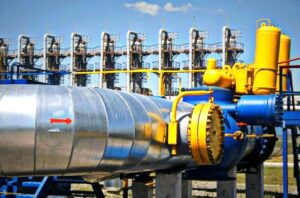
The State Customs Service of Ukraine (SCC) has granted authorized economic operator (AEO) status with the right to apply simplifications to 100 companies, according to a press release from the SCC.
“This milestone symbolizes not only a quantitative achievement, but also qualitative progress in the development of transparent and effective cooperation between customs and business, which is an important step towards Ukraine’s integration into the European economic space,” the agency explained on its Telegram channel on Monday.
It is noted that among the Ukrainian companies that have received AEO status are manufacturers, exporters, importers, freight forwarders, and other participants in foreign economic activity (FEA).
It is noted that five companies already have both types of authorizations: “granting the right to apply simplifications” (AEO-C) and “confirming security and reliability” (AEO-B).
The GTS reminded that AEO status is a recognized mark of trust that confirms the reliability, security, and high standards of companies in the international supply chain. It gives enterprises the right to simplified customs procedures, saves time and reduces logistics costs, and, consequently, increases the competitiveness of Ukrainian businesses in the global market. For Ukraine, this means strengthening its economic potential, increasing exports, and attracting new trading partners.
For more information on AEO status and authorization to apply for simplifications, please visit https://customs.gov.ua/deiaki-pitannia-funktsionuvannia-avtorizovanikh-ekonomichnikh-operatoriv
Previously, round tables were dedicated to customs reform, where event organizer and moderator Maksim Urakin stated that the State Customs Service provides up to 40% of Ukraine’s state budget revenues, with these figures remaining stable over the past few years. That is why customs reforms are so important for the country.

From September 28, 2022, the Moldovan GTS operator confirms nominations for natural gas transportation in the form of a virtual reverse (backhaul) at the Grebenniki junction, the GTS Operator of Ukraine said on Friday.
“OGTSU has been working with partners for a long time to implement this opportunity. The long-awaited implementation of the virtual reverse by Moldova opens the way for the transportation of natural gas along the Trans-Balkan corridor in both directions,” said Andrey Prokofiev, head of the department for work with customers of OGTSU services.
The potential capacity of the Trans-Balkan corridor is up to 20 billion cubic meters. m per year. The route opens up the possibility for customers to import gas from LNG terminals in Turkey and Greece.
“The Trans-Balkan Corridor opens up opportunities not only for Ukraine. Benefits through access to new gas markets open up for the countries of Central and Eastern Europe with the ability to store the resource in underground gas storage facilities in Ukraine,” added Olga Belkova, Director for Cooperation with Government Agencies and Organizations.
The GTS operator of Ukraine hopes for a legislative settlement of the possibility of transportation in the form of a backhaul on a long-term basis.
As reported, from August 1, 2022, the OGTSU increased the volume of the possibility of measuring natural gas at the Grebeniki junction (between Ukraine and Moldova) by 1.5 times – from 3.96 to 6.12 million cubic meters. m per day, thereby ensuring that Ukraine fulfills all the prerequisites for launching the Trans-Balkan corridor.
An increase in natural gas measurement volumes in the future opens up more opportunities for both Ukrainian and European traders. Namely, customers of the EU countries will be able to import gas via the Trans-Balkan corridor from LNG terminals in Greece and Turkey through the territory of Ukraine to Hungary, Slovakia, Poland.

Transit of natural gas through the gas transmission system (GTS) of Ukraine in January-October 2021 amounted to 35.3 billion cubic meters, which is 21.6% less than in the same period of 2020 (45 billion cubic meters), and 56.7% less than in ten months of 2019 (81.5 billion cubic meters), according the Gas Transmission System Operator of Ukraine (GTSOU).
In particular, in the western direction 32.456 billion cubic meters of gas were supplied by transit (to Slovakia – 22.43 billion cubic meters, to Hungary – 6.799 billion cubic meters, to Poland – 3.227 billion cubic meters); in the south direction – 2.833 billion cubic meters were supplied (to Moldova – 2.439 billion cubic meters, and to Romania – 394 million cubic meters).
In October, transit amounted to 2.634 billion cubic meters, which is 19.1% less than in September due to the cessation of gas supplies to Hungary via the Ukrainian route by Gazprom. In particular, in the direction of Slovakia, transit amounted to 2.117 billion cubic meters, Poland – 342 million cubic meters, and Moldova – 176 million cubic meters.
The GTSOU notes that according to the results of booking the capacities of the Ukrainian GTS on the RBP and GSA platforms for October 2021, Gazprom not only did not book the additional transit capacities, but also significantly reduced the use of the booked annual capacities, since no applications for transit of Russian gas to Hungary were received from October 1.
As a result, the average daily volumes of Russian gas transported through the territory of Ukraine in October fell to 86 million cubic meters, which is below the minimum volume under the current transit agreement (110 million cubic meters).
“We are concerned about the reduction in transit of Russian gas through the Ukrainian route: since October 1, the volume of pumping has been lower than the booked capacity. Although since November 1, transit to Moldova has increased thanks to a new contract for the supply of gas from the Russian Federation, however, the overall use of the Ukrainian GTS capacity for transit of Russian gas continues to decline: on average, at the beginning of November, it was 60 million cubic meters per day,” GTSOU Director General Serhiy Makogon said.

Gazprom is boosting gas pumping via Ukraine’s gas transmission system and is likely to exceed its contract obligations, but it will not be profitable to increase pumping even further, Russian President Vladimir Putin said during a meeting on the development of the energy sector.
“We are seeing all kinds of speculation on the topic of Ukraine’s gas transmission system, on supplies through it; I would also like to note that here now. Our contact obligations for supplies through Ukraine’s gas transmission system are 40 billion cubic meters of gas per year, and in 9M this year, Gazprom increased these supplies, this pumping, to be more precise, through the Ukrainian transmission system more than 8%. We can say with confidence that we will exceed our contract obligations for gas supplies through the territory of Ukraine. It is unprofitable for Gazprom to increase them further, because it is more expensive. Pumping through the new systems is significantly cheaper, by around $3 billion per year against corresponding supply volumes,” Putin said.

Transit of natural gas through the gas transmission system (GTS) of Ukraine in January-July 2021 amounted to 25.616 billion cubic meters, which is 14.1% less than in the same period in 2020 (29.82 billion cubic meters), according to the data of Gas Transmission System Operator of Ukraine (GTSOU).
In particular, in January, transit amounted to 3.863 billion cubic meters (124.6 million cubic meters per day), in February – 2.907 billion cubic meters (103.8 million cubic meters per day), in March – 3.694 billion cubic meters (119.2 million cubic meters per day), in April – 3.718 billion cubic meters (123.9 million cubic meters per day), in May – 3.86 billion cubic meters (124.5 million cubic meters per day), in June – 3.723 billion cubic meters (124.1 million cubic meters per day), in July – 3.851 billion cubic meters (124.2 million cubic meters per day).
According to the press service of the company, in particular, 23.3 billion cubic meters of gas were transported by transit in the western directions (Slovakia – 15.8 billion cubic meters, Hungary – 5.3 billion cubic meters, Poland – 2.2 billion cubic meters), in the south – 2.3 billion cubic meters (Moldova – 1.9 billion cubic meters, Romania – 400 million cubic meters).
GTSOU notes that in July Gazprom used all previously booked capacities, but showed no interest in additional transit capacities, despite the record growth in prices in European gas markets, as well as low volumes in European storage facilities and the planned stop of Yamal-Europe routes and Nord Stream 1.
According to GTSOU Director General Serhiy Makogon, Gazprom is emptying its UGS facilities in Europe in order to compensate Europeans for the lost gas volumes, and at the same time not to increase additional transit through Ukraine.

Ukraine may return to the idea of attracting European and American companies to manage its gas transmission system (GTS), Advisor to the Minister of Energy of Ukraine Lana Zerkal has said, expressing this opinion on the air of ICTV TV channel.
“This may be the same idea that was in 2019 for a joint consortium involving European and American companies to use the Ukrainian pipeline,” the ministry’s press service said, citing her.
According to Zerkal, this step will contribute to the lifting of Gazprom’s export monopoly on gas sales, since European consumers will have access to the GTS, deciding which gas supply route is more profitable for them.
“This is a geopolitical problem and it must be resolved at the geopolitical level using mechanisms inherent in geopolitics. Nord Stream 2 has become a stumbling block for the whole of Europe and for transatlantic relations. This is not only a question of Ukraine. This gas pipe has become an issue and a subject of international negotiations at the highest level,” Zerkal said.
She recalled that with the help of Ukraine’s partners in the European Union, it was already possible to amend the EU Third Gas Directive, which provides for its application to Nord Stream 2.
“It is very important that it be applied in full, because it will make it possible to balance market relations if Nord Stream 2 is nevertheless completed, certified and launched,” she said.
According to her, the EU has tools that can secure Ukraine from the use of Nord Stream 2 in full, leaving the Ukrainian GTS without transit.
“But for this we need to work with the European Commission, as well as with other countries that are also not interested in the launch of Nord Stream 2,” Zerkal said.